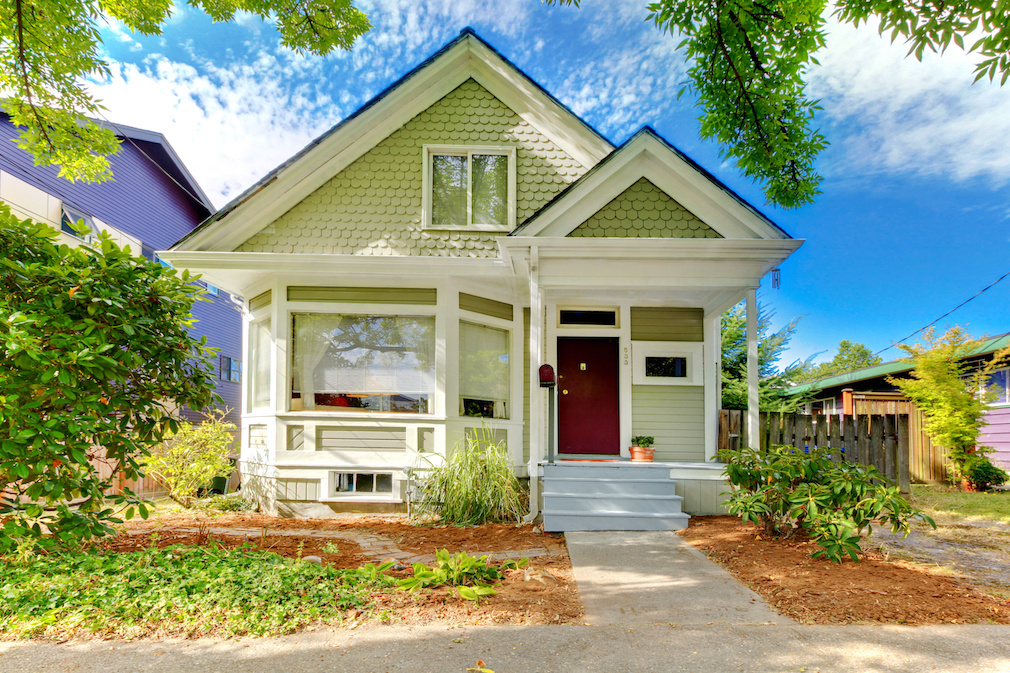The Federal Housing Finance Agency (FHFA) announced on Wednesday that its single-family and multifamily affordable housing goals for Fannie Mae and Freddie Mac will remain unchanged from those set in 2018-2020. However, unlike previous goals set for a three-year period, the FHFA announced the benchmarks for 2021 only, citing economic uncertainty from the COVID-19 pandemic.
The affordable housing goals for single-family are: 24% of mortgages purchased by the GSEs must be for low-income borrowers, and the low-income refinancing goal is 21%. The goals require 14% of mortgages to be for homes in low-income areas, and 6% of mortgages must be for very-low-income borrowers.
For multifamily lending, 315,000 rental units financed must be affordable to low-income families, and 60,000 units must be at “very low income” level, the release said.
The government agency first proposed the rule at the end of July 2020, and received varying reviews from industry giants during the open comment period.
The Mortgage Bankers Association expressed support for the affordable housing goals, and the timeline outlined by FHFA.
“Allowing an additional year to collect data and observe the path of the market recovery will provide a better picture of the impact of the economic downturn on all consumers, and particularly the impact on low- to very low-income borrowers. MBA supports such an approach by FHFA,” the MBA commented.
Both Fannie Mae and Freddie Mac applauded the decision to curtail the rule to one year as the length and severity of the pandemic are still uncertain.
“In this disrupted market and uncertain time, Freddie Mac’s countercyclical role is critical; we have seen in financial crises of the past that very low- and low-income families are the first to suffer when liquidity is constrained.”
In regard to the shortened time frame, Freddie Mac said the FHFA has previously acknowledged that it does not intend for the GSEs to undertake uneconomic or high-risk activities in support of the goals.
It also said the FHFA “believes maintaining sound underwriting discipline going forward is important for conserving the Enterprises’ assets and for supporting their mission in a manner in which the achievement of housing goals directly relates to actual market conditions.”
The National Association of Home Builders also voiced it’s support of the one-year affordable housing goals, but said it’s concerned the cost of the flexible policies could cause the GSEs to reduce their mortgage purchases altogether.
“Current estimates of the costs are over $6 billion: $4 billion due to forbearance defaults; $1 billion due to the foreclosure moratorium; and $1 billion in servicer compensation and other forbearance costs,” the NAHB commented. “It seems fair to assume these costs may rise since there is no clear picture of the length and impact of the ongoing coronavirus pandemic and what future measures may need to be taken by FHFA.”
Some groups, though, didn’t feel the affordable housing benchmarks were high enough.
In a joint letter headed by the Center for Responsible Lending, and backed by eight other organizations including the NAACP, National Housing Conference and National Fair Housing Alliance, the coalition called for an increase to the low-income purchase goal to 27%. The groups believe this should be the minimum in 2022 and 2023.
“As described in detail in our comment on the 2018-2020 goals, the GSEs should be required to meet both the benchmark and the market metrics. Also, it should be noted that the GSEs’ own policies obstruct them from increasing the goals and these policies should be modified,” the organizations commented. “Lastly, FHFA should monitor the low-income areas home purchase subgoal to ensure policy objectives are met and that the subgoal does not facilitate displacement of lower-income families.”
The coalition also called for greater transparency following the release of the FHFA rules. Under the Housing and Economic Recovery Act of 2008, the FHFA is required to establish annual housing goals for both enterprises. However, the coalition requested the FHFA should include the GSEs’ progress towards meeting their 2020 benchmark goals, as well as an analysis of the goal-affected markets.
Alongside the affordable housing goals release on Wednesday, the FHFA announced publishing an advance notice of proposed rulemaking (ANPR) seeking input on issues that FHFA may address in future housing goals rulemaking.
The FHFA plans to issue a proposed and final rule in 2021 that will establish housing goal benchmarks for “2022 and beyond” and will be open to commentary as well.
Industry leaders had previously weighed in on the future of affordable housing in November following the announcement of President-elect Joe Biden, whose housing plan includes $100 billion toward an Affordable Housing Fund.
“There is a tremendous opportunity – whether in an infrastructure or stimulus package or other legislation – for the incoming administration to make strides in addressing one of the most critical issues facing extremely low-income families today: the lack of decent, accessible, and affordable housing,” said Sarah Saadian, vice president of public policy for the National Low Income Housing Coalition.





